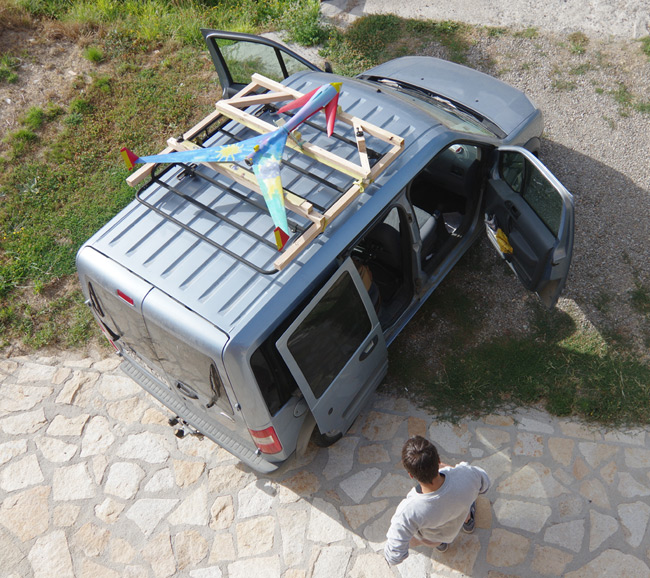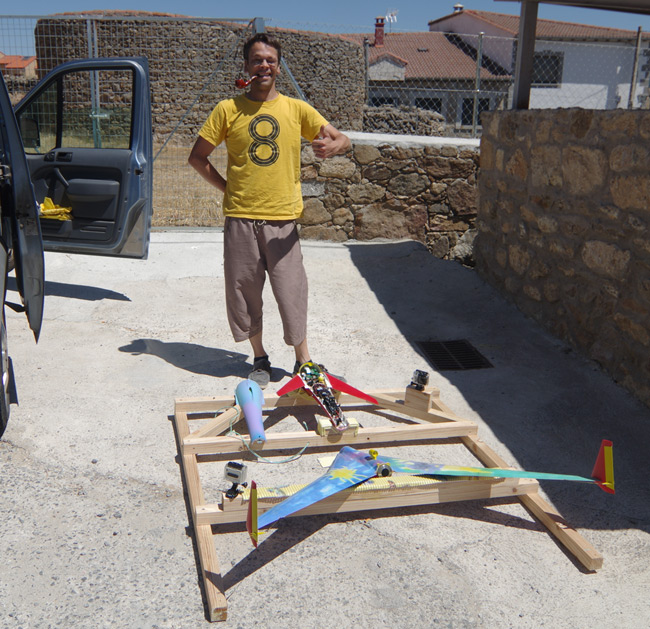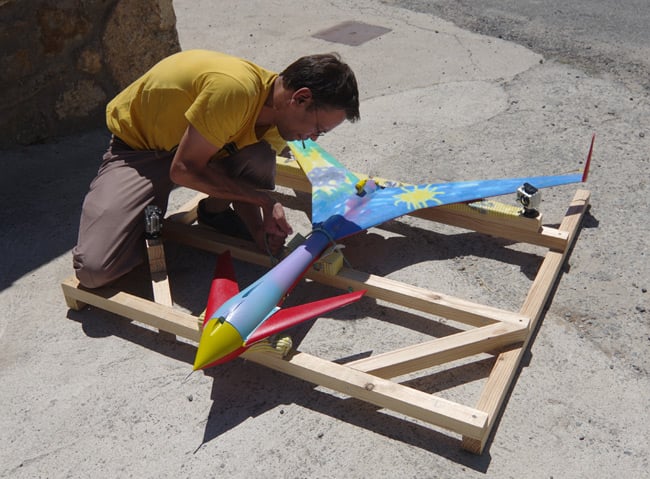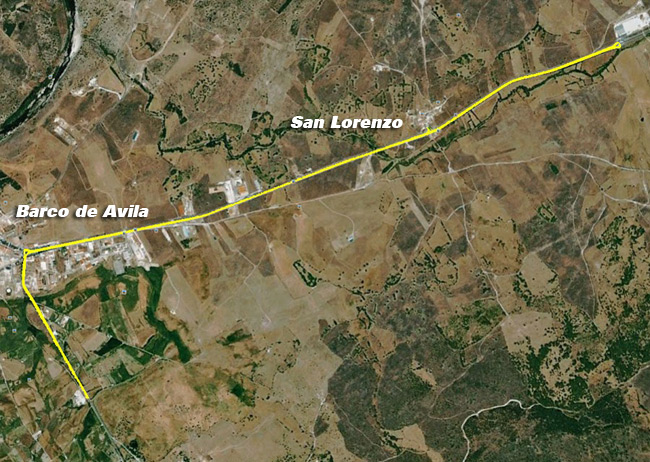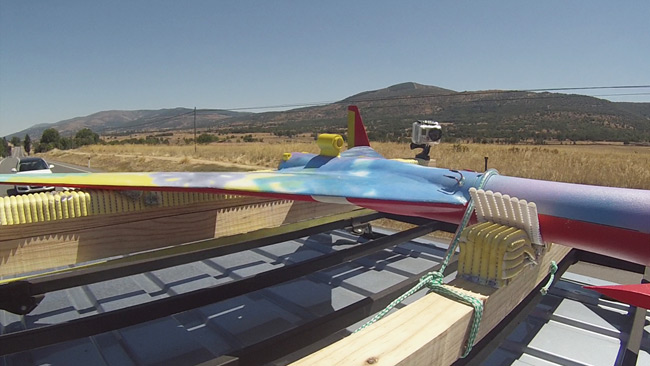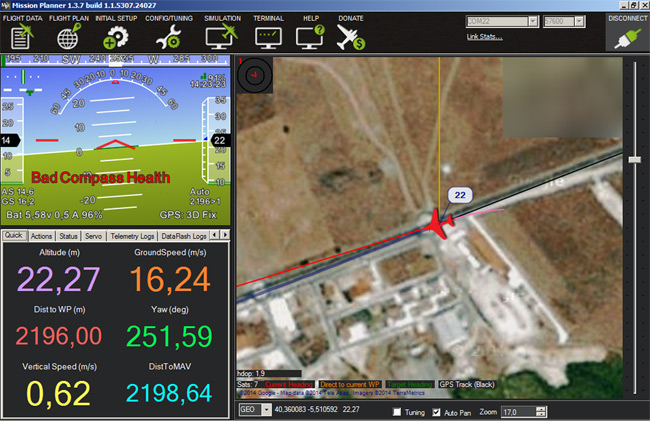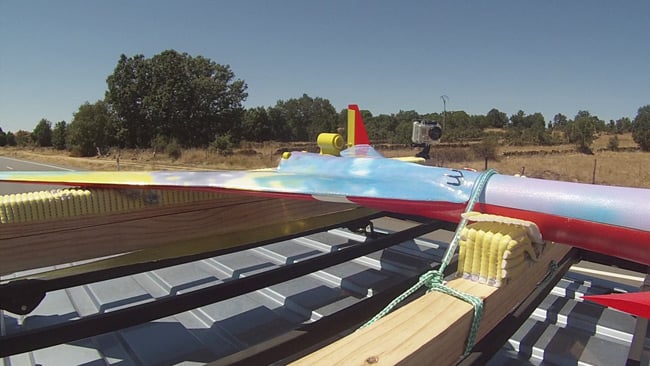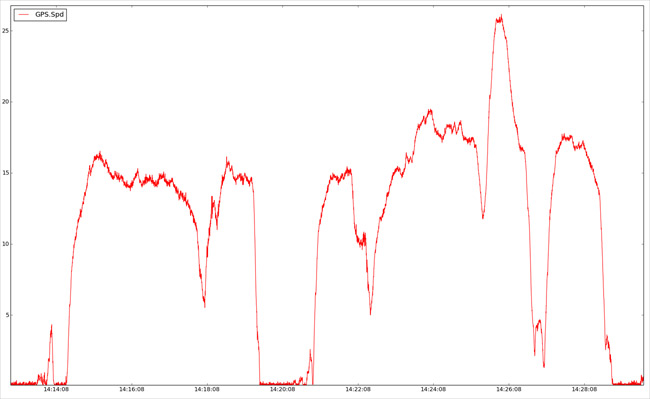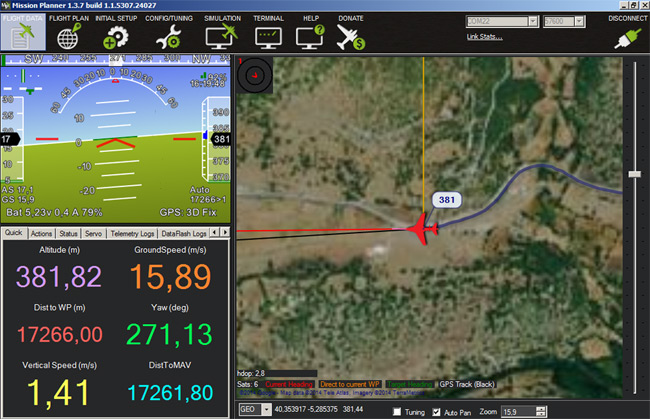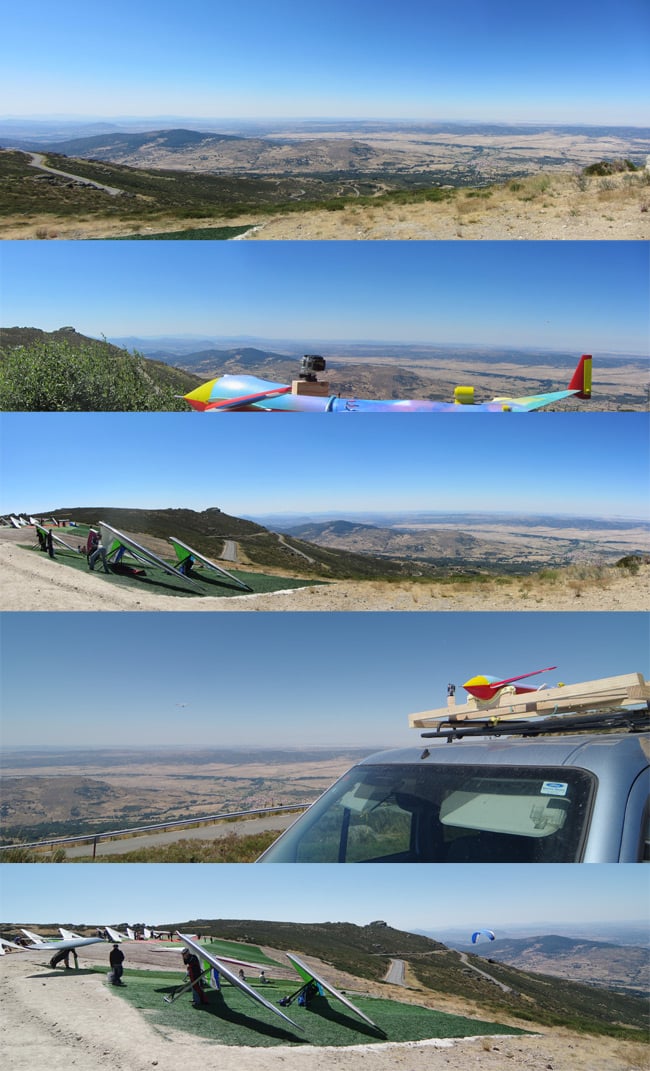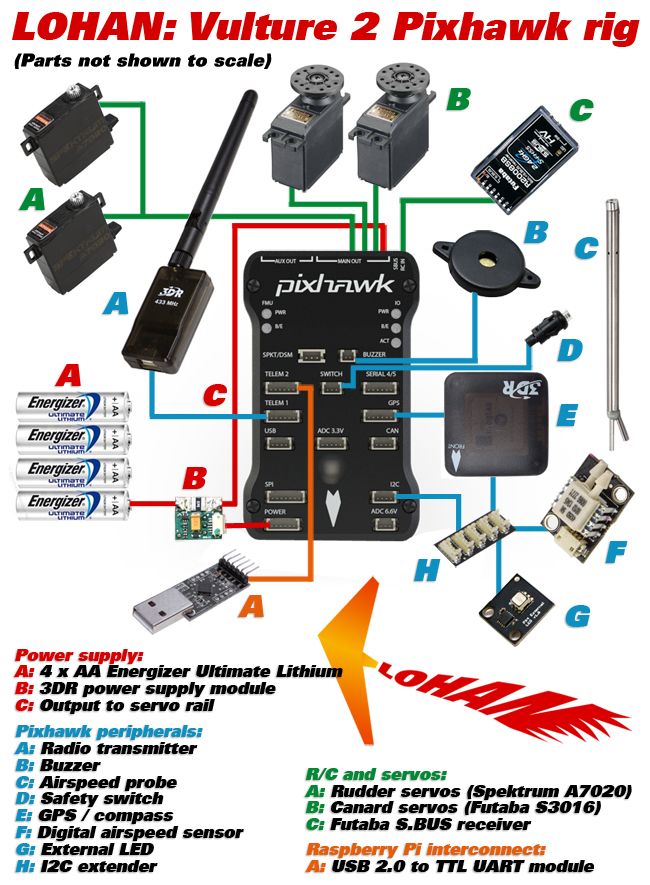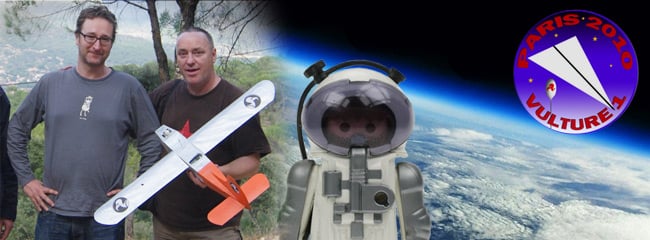Original URL: https://www.theregister.com/2014/08/19/vulture_test_run/
Vulture 2 takes a battering in 100km/h test run
Still in one piece, but we're going to need MORE POWER
Posted in Science, 19th August 2014 09:32 GMT
Vid Watch Video
The Low Orbit Helium Assisted Navigator (LOHAN) team is still crunching numbers from last Friday's test run of the Vulture 2 spaceplane, which came at the end of an intensive week of brain surgery on the aircraft's Pixhawk autopilot.
Hats off to Linus Penzlien and Andrew Tridgell for crafting and installing the custom APM:Plane mission parameters/commands, more on which can be found here.
We'd already prepared a magnificent shed-built platform to mount the Vulture 2 atop a van...
...and with all systems ready to roll, we were ready to give the thing a blast. The specific aims of the test were:
- Ensure the plane wasn't going to fall apart
- Ensure the avionics, electrical connections, etc, weren't going to fall apart
- Check Pixhawk GPS, compass, airspeed sensor, and so forth
- Gauge battery performance
- Try out Pixhawk MAV_CMD_NAV_ASCEND_WAIT command
This last item, according to Tridge, "is an AUTO mode command that is used to wait for LOHAN to ascend to the needed altitude, wiggling servos on the way"
"While ascending the servos will move through their full range every wiggle_time seconds."
The purpose of the command is to prevent the servos freezing on the ascent as the Vulture 2 soars majestically heavenwards under the helium balloon. In this case, we set wiggle_time to 15 seconds.
Before strapping the plane to the van, we took a moment to address complaints that there simply aren't enough pipes on this project. Lest anyone doubt we have sufficient boffinous accoutrements for the job, here's Linus setting the record straight...
...and here he is lashing down the spaceplane:
Our 20-minute blast down the King's highway began at the village of San Lorenzo, hitting Barco de Avila before we retraced our route, thundered through San Lorenzo at 100km/h and finally returned to the start point:
Here's a still from the vid (see top of the story) at 60km/h (58.46km/h, according to the Pixhawk logs)...
...and here's the APM Mission Planner view:
At 100km/h (according to the van's speedo, 93km/h according to the logs), the Vulture 2 was taking a bit of a pasting:
If you check out the vid at the top of the article, you can just see the starboard canard obeying the MAV_CMD_NAV_ASCEND_WAIT command. We had to disconnect the port canard and rudder servos for reasons we'll explain in a bit.
Try a couple of graphs, then, showing Pixhawk GPS speed, and airspeed sensor data overlaid:
Pretty good. Everything else worked a treat on the run, except the compass, which was evidently disturbed by the van's metal bulk. We've still got plenty of data to plough through, including the results from the accelerometers, so that'll keep us off the highway for a while.
PARIS, because we like our wiggle_time
Having wrapped the main run, we then disconnected the servos altogether and went for a drive to get further Pixhawk sensor data. The route took us to (where else?), the Peña Negra - launch site of our Paper Aircraft Released Into Space (PARIS) mission.
It's a tortuous route to 1,909m...
...but we were very appropriately greeted at the top by a flock of hang gliders and paragliders enjoying the perfect flying weather:
On the way up, in the spirit of aeronautical solidarity, we picked up a visiting paraglider chap from the Basque Country who was yomping his way back from a landing some 800m below the summit:
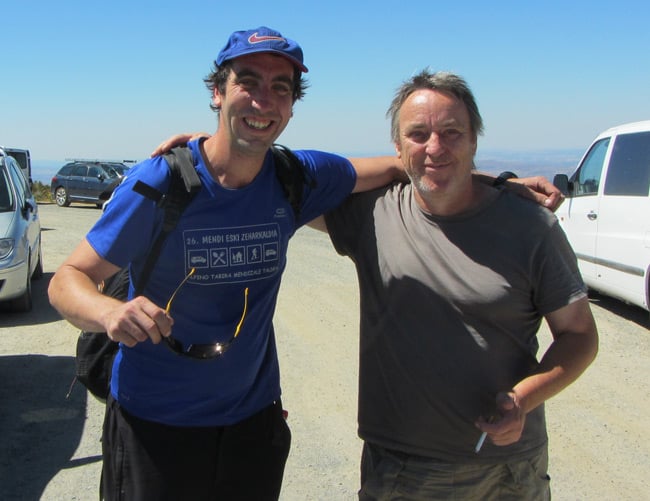
Naturally, a quick beer was offered as thanks, and gratefully accepted.
The total time for the Pixhawk-only drive was 116 minutes, during which we covered 92km. Suffice it to say, the autopilot was still going strong on four AA Energizer Ultimate Lithium batteries, and indeed operated continuously for almost five hours before we finally unplugged it.
While the Pixhawk power is not a concern, the same sadly can't be said of the servos.
Bench testing last week showed the port canard servo had suffered damage in the same dramatic incident which saw its starboard partner go up in smoke.
A voltage reading from the Pixhawk's servo rail showed the servo provoking a wild and unacceptable fluctuation...
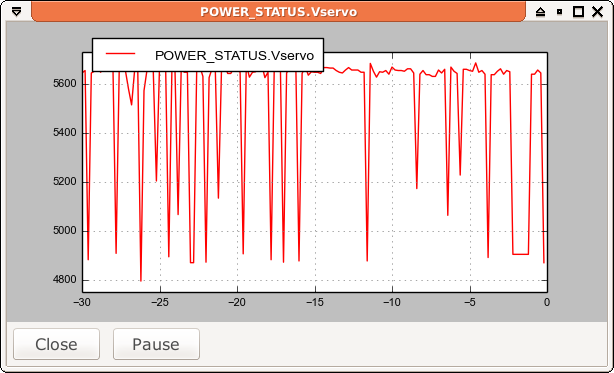
...so we had to disconnect that for our road test, awaiting delivery of a replacement. Furthermore, we were pushing our luck attempting to power both Pixhawk and the servos from one battery pack, as seen here in our avionics schematic:
In the end, the servo current draw prompted the Pixhawk to brown out and reboot, a completely unideal state of affairs. Mercifully, the solution is pretty simple: cram in a dedicated battery pack for the servos, with the output regulated by a BEC.
That should do the trick, and we'll then take the Vulture 2 out for final spin with all servos powered. Onwards and upwards... ®
More from the lovely LOHAN:
- You can find full LOHAN coverage right here.
- If you're new to LOHAN, seek out our mission summary for enlightenment.
- There are photos our our magnificent Vulture 2 spaceplane here, and detailed structural plans here.
- For your further viewing pleasure, we have all our photographic material stored on Flickr.
- Our LOHAN and Paper Aircraft Released Into Space (PARIS) videos live on YouTube.
- We sometimes indulge in light consensual tweeting, as you can see here.
